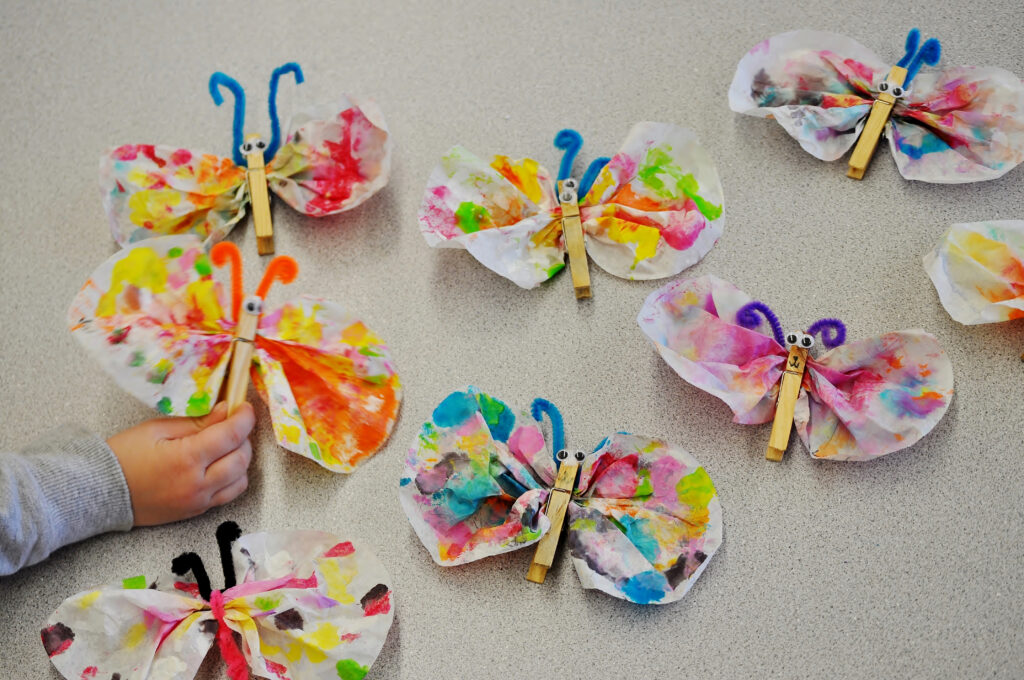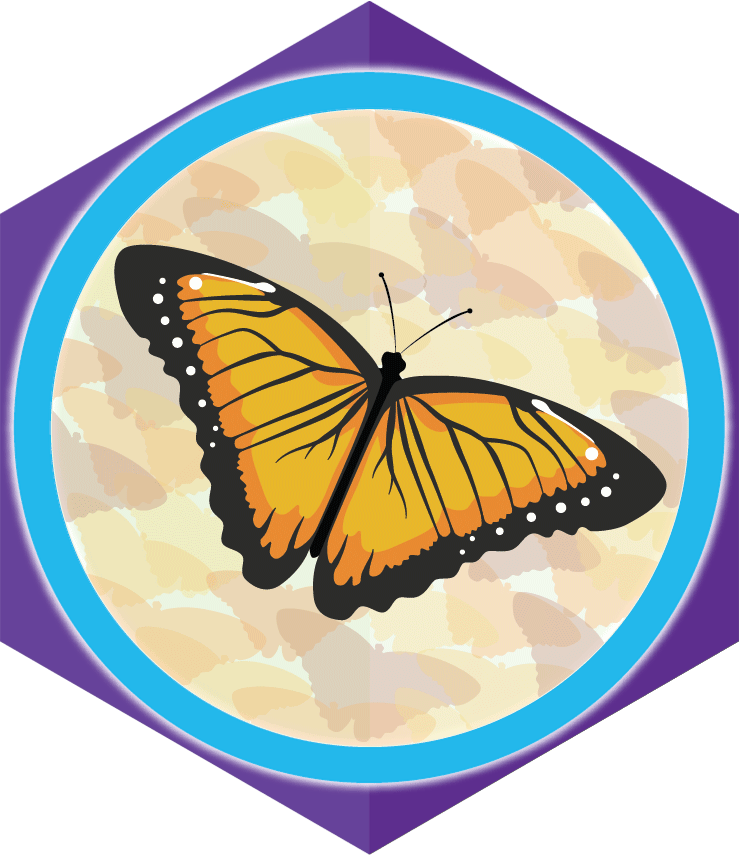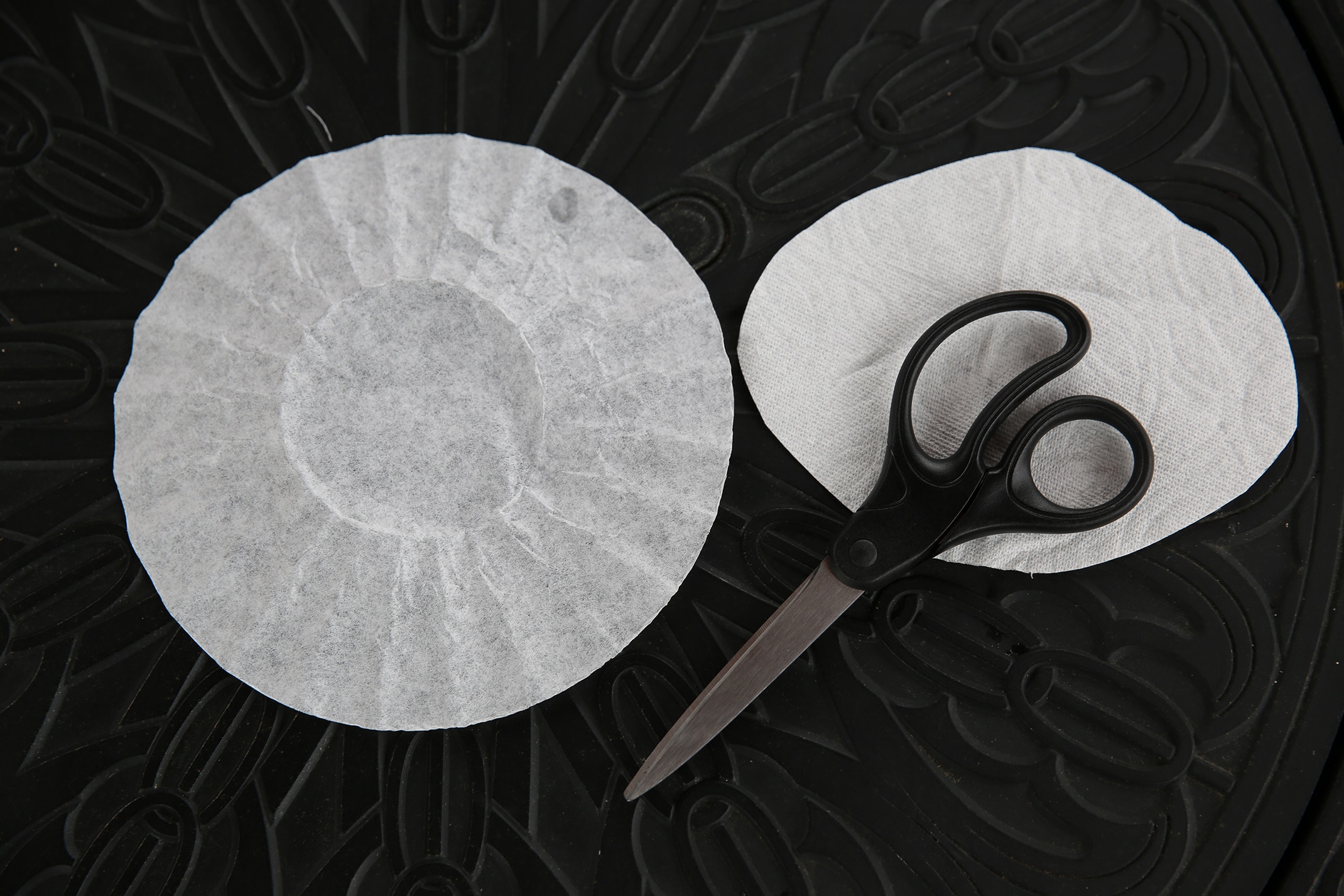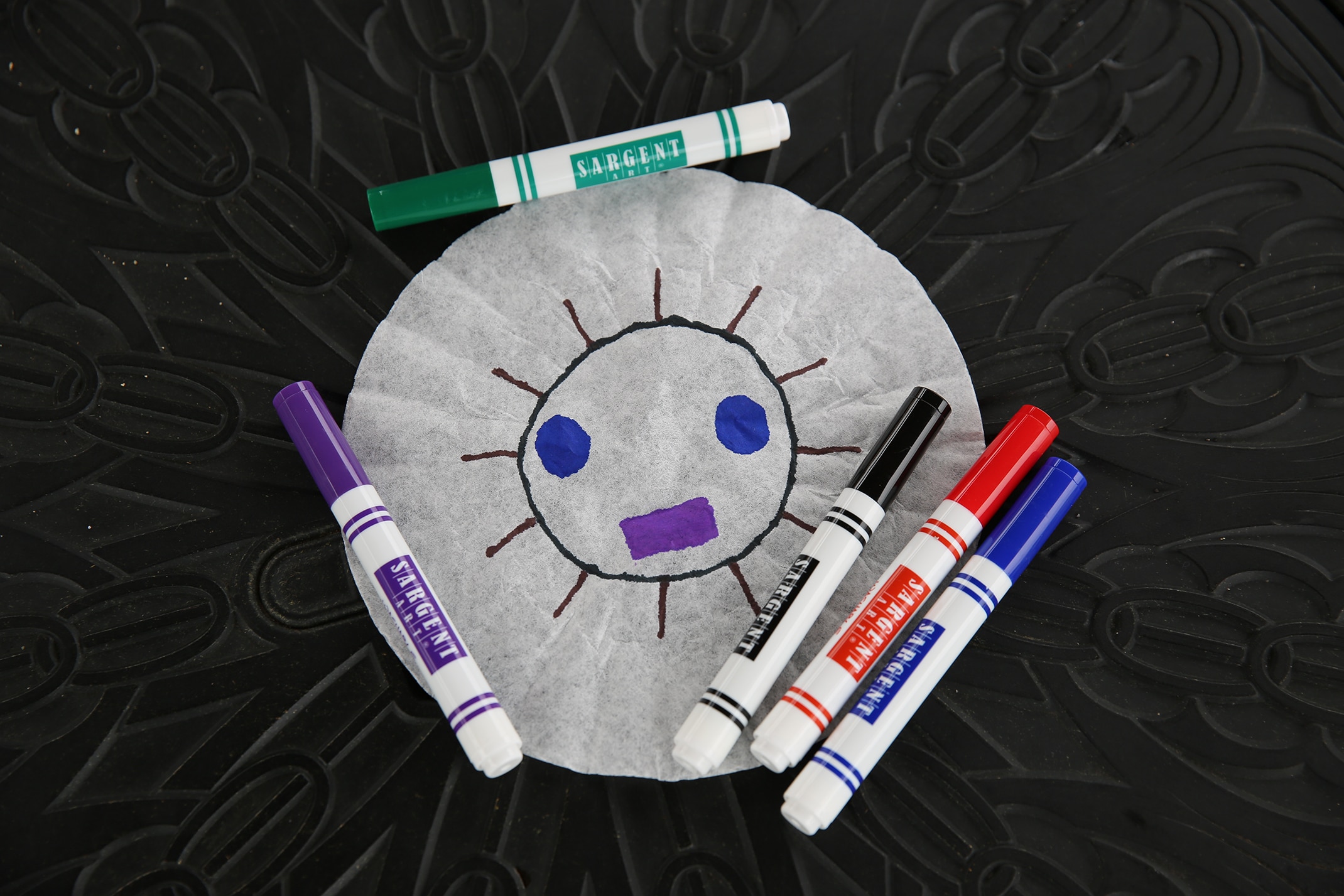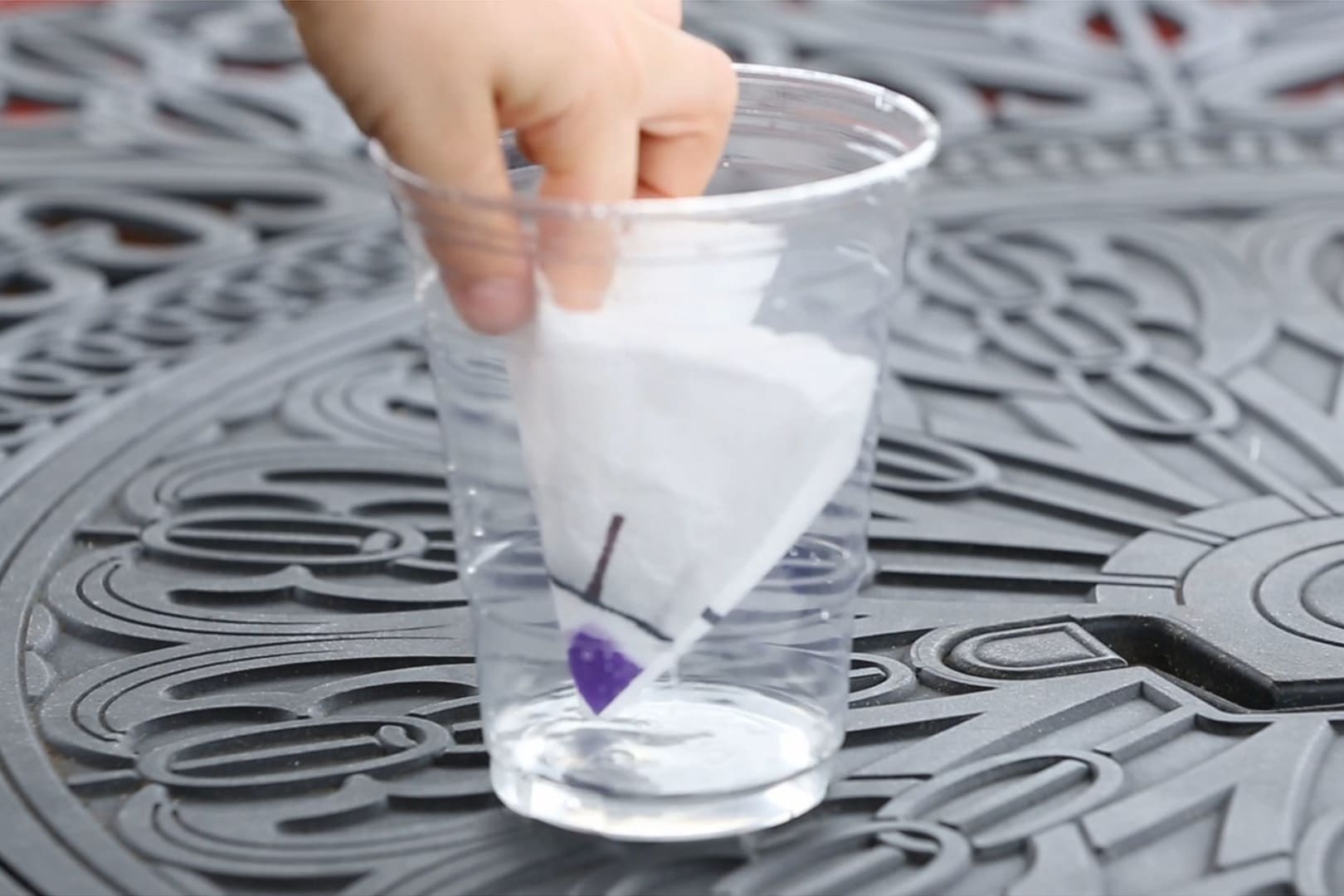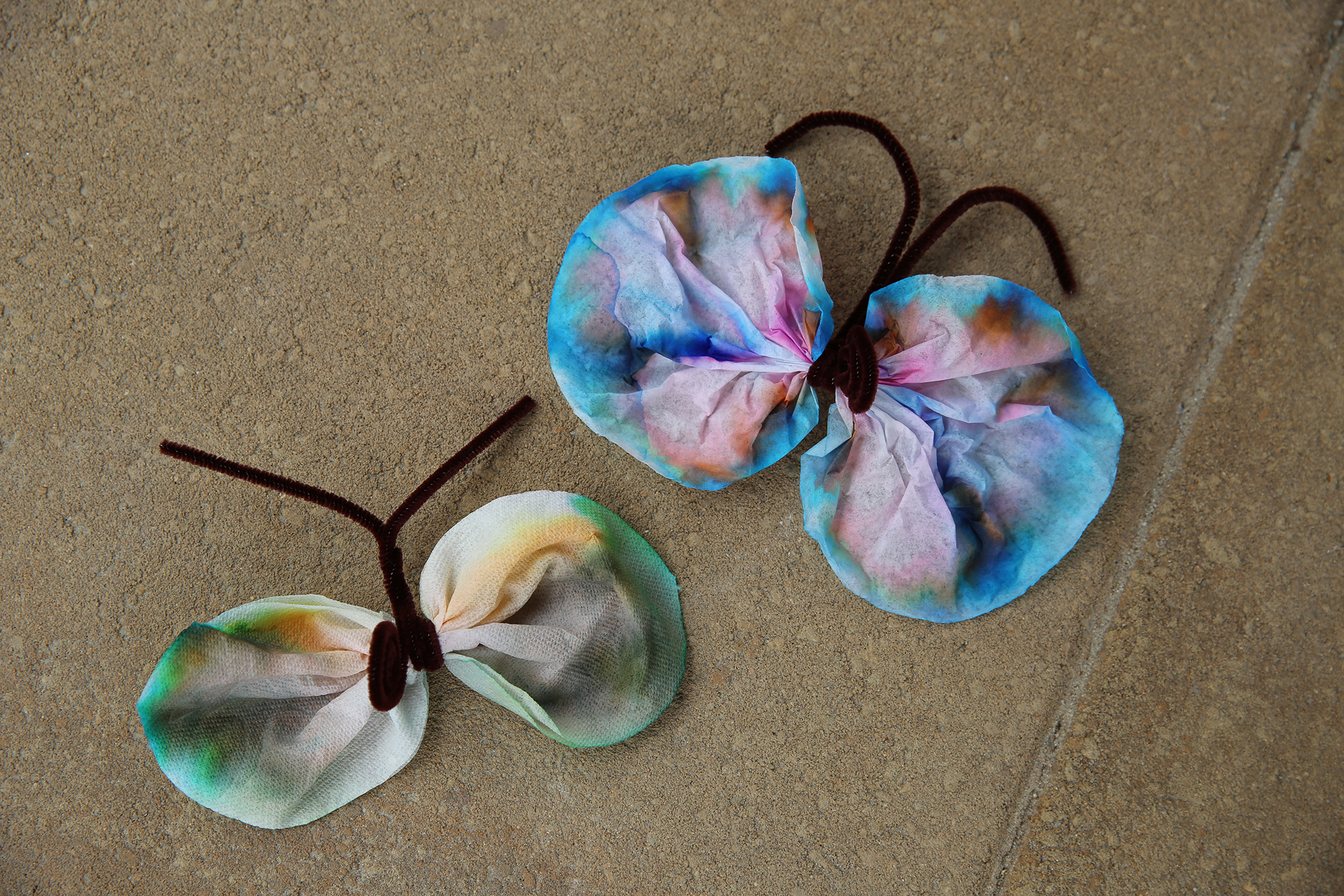Gather your materials as you prepare to create a model of a butterfly. If you are using a coffee filter, you are ready to start! If you are using a paper towel, cut it in half so it forms a square-like shape; then cut off the corners to create a rough circle.
 Fun Fact:
Fun Fact:

